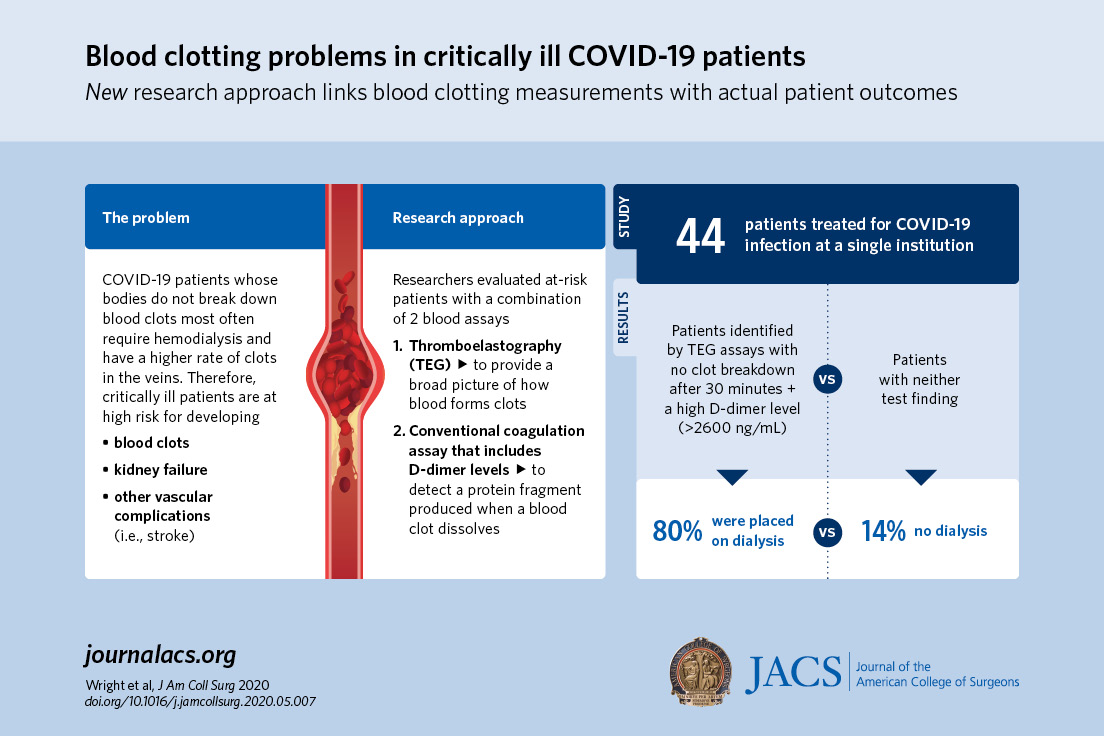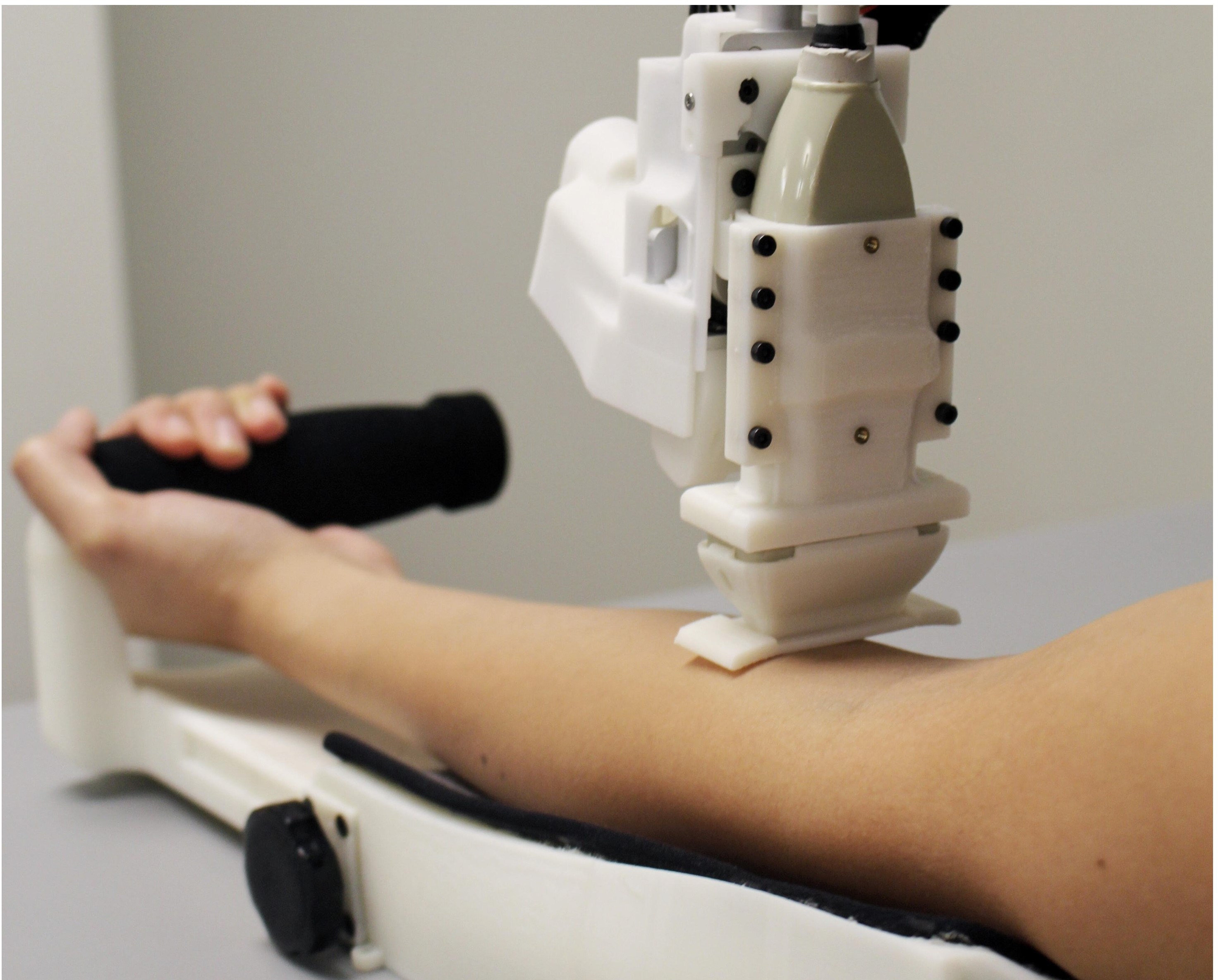A gut microbial metabolite called 2-methylbutyrylcarnitine (2MBC) plays a role in exacerbating thrombosis — the formation of blood clots – researchers report February 23rd in the journal Cell Metabolism.
Tag: Thrombosis
Common Cold Virus Linked to Potentially Fatal Blood Clotting Disorder
The new observation, made by UNC School of Medicine’s Stephan Moll, MD, and Jacquelyn Baskin-Miller, MD, suggests that a life-threatening blood clotting disorder can be caused by an infection with adenovirus, one of the most common respiratory viruses in pediatric and adult patients.
Complications for procedure to open clogged pulmonary arteries decrease significantly
Complications after a minimally invasive balloon pulmonary angioplasty have decreased substantially over the last decade for patients with high blood pressure in their pulmonary arteries caused by chronic blood clots, known as CTEPH. The procedure, which is offered for patients who are not candidates for surgery, involves inflating a balloon inside of diseased lung arteries to break up clots and restore blood flow to the lungs.
People with additional X or Y chromosome at increased risk for dangerous blood clots
People with an additional X or Y chromosome—a genetic condition known as supernumerary sex chromosome aneuploidy—have an increased risk of developing blood clots known as venous thromboembolism (VTE), a Geisinger study found.
DOACs more effective, cost-effective compared to LMWH for cancer-associated thrombosis
A cost-effectiveness analysis comparing direct oral anticoagulants (DOACs) to low-molecular-weight heparin (LMWH) found that DOACs are both more medically effective and cost-effective than LMWH when treating cancer-associated thrombosis (CAT). These findings may inform decisions on the clinical level as well as policy decisions. The analysis is published in Annals of Internal Medicine.
Full-dose anticoagulation treatment prevented blood clots in COVID-19 patients
A clinical trial of patients with COVID-19 led by investigators at the TIMI Study Group at Brigham and Women’s Hospital and the Critical Care Cardiology Trials Network (CCCTN) has found that full-dose anticoagulation lowers the risk of blood clotting complications compared with standard-dose prophylactic anticoagulation.
Big Relief in a Small Pack
For patients in the Hematology-Adolescent Medicine Clinic at Children’s Hospital Los Angeles, the menstrual care products they take home after each visit are a source of comfort and relief—mentally, physically and financially. Every month in the United States, approximately 1 in 5 menstruating individuals leave school early or miss school entirely because they do not have access to menstrual care products.
Large catheters, small veins, increase blood clot risk for cancer patients
A world-first study led by the University of South Australia has found that cancer patients receiving chemotherapy intravenously have more than double the risk of developing a blood clot or thrombosis if the vein is too small and the catheter occupies more than 45 per cent of the vein.
Researchers Explore COVID-19’s Effect on Pregnancy
Article title: Pregnancy and COVID-19 Authors: Elizabeth A.N. Wastnedge, Rebecca M. Reynolds, Sara R. van Boeckel, Sarah J. Stock, Fiona Denison, Jacqueline A. Maybin, Hilary O.D. Critchley From the authors: “From the current evidence base, it is difficult to draw…

Researchers Identify COVID-19 Blood Clotting Cause
A new University of Kentucky College of Medicine study may provide answers for why so many COVID-19 patients experience thrombosis, or the formation of blood clots that obstruct blood flow through the circulatory system.
What Is Cerebral Venous Thrombosis? Study Finds Blood Clot Condition on the Rise
Cerebral venous thrombosis (CVT) occurs when a blood clot forms in one of the veins in the brain, preventing blood from draining out of the brain. A new analysis has found that the incidence of CVT in the United States is higher than previously reported and has increased over time. The study is published in the August 26, 2020, online issue of Neurology®, the medical journal of the American Academy of Neurology. The study found the increase occurred mainly in men and older women. Consistent with prior data, the incidence of CVT remained highest in younger women and it did not increase across the study. Researchers also found the incidence of CVT in Black people is higher than in people of other racial and ethnic groups.

Blood clotting abnormalities reveal COVID-19 patients at risk for thrombotic events
When researchers from the University of Colorado Anschutz Medical Campus, Aurora, used a combination of two specific blood-clotting tests, they found critically ill patients infected with Coronavirus Disease 2019 (COVID-19) who were at high risk for developing renal failure, venous blood clots, and other complications associated with blood clots, such as stroke.

New University of Kentucky study could change what we know about platelets
The $6.6 million study will focus on how platelets function when they form clots in blood vessels and when they sense circulating pathogens, like viruses.
Researchers Identify Two Proteins that Interfere with Blood Clot Formation
Article title: Antithrombotic effects of heme-degrading and heme-binding proteins Authors: Karl A. Nath, Joseph P. Grande, John D. Belcher, Vesna D. Garovic, Anthony J. Croatt, Matthew L. Hillestad, Michael A. Barry, Meryl C. Nath, Raymond F. Regan, Gregory M. Vercellotti From…

New Robot Does Superior Job Sampling Blood
In the future, robots could take blood samples, benefiting patients and healthcare workers alike. A Rutgers-led team has created a blood-sampling robot that performed as well or better than people, according to the first human clinical trial of an automated blood drawing and testing device.

Preventing and Recognizing Blood Clots
When you hear the condition “blood clot,” your mind may not immediately think of your child being at risk. But Guy Young, MD, Director of the Hemostasis and Thrombosis Center at Children’s Hospital Los Angeles, says he’s seen a recent…